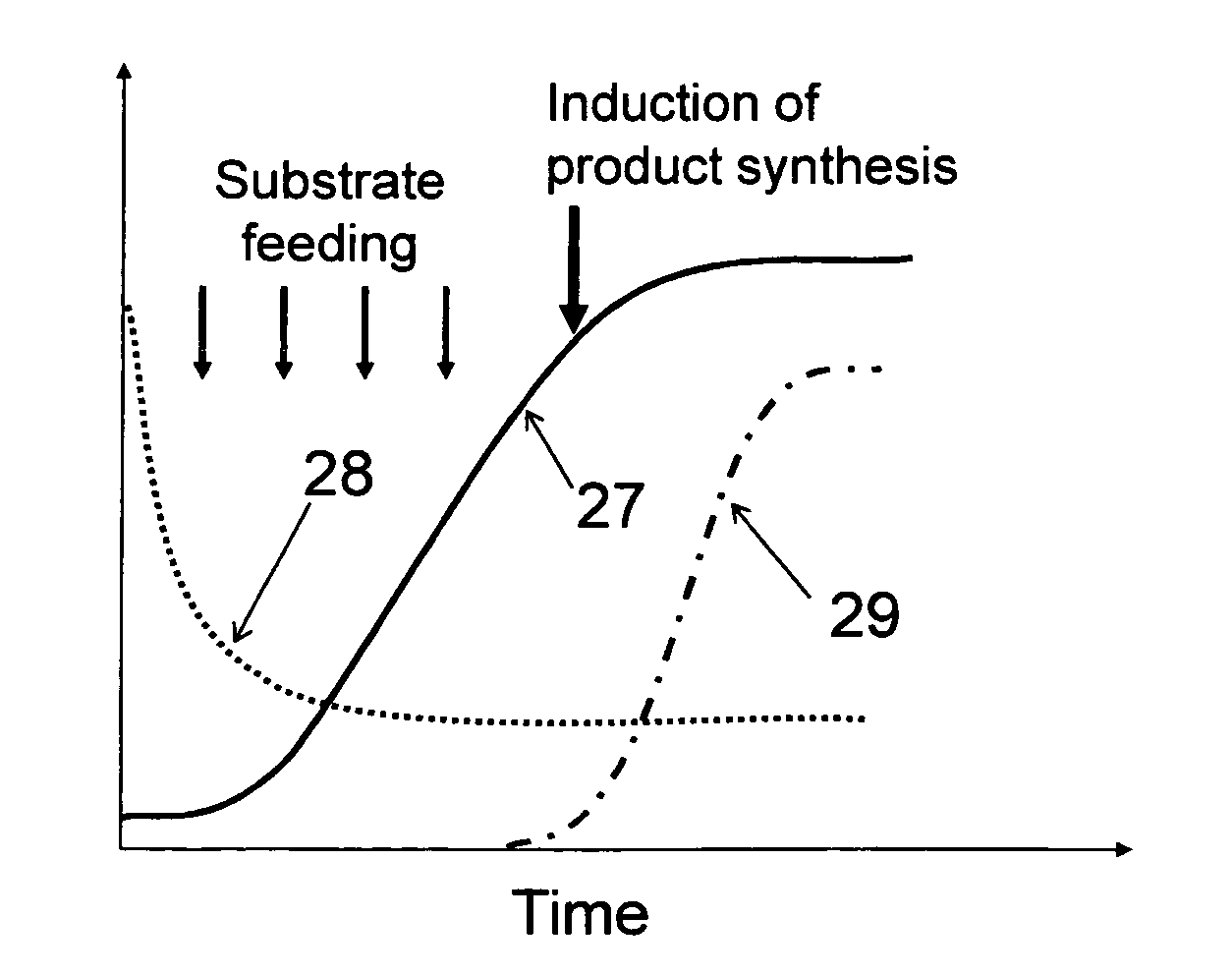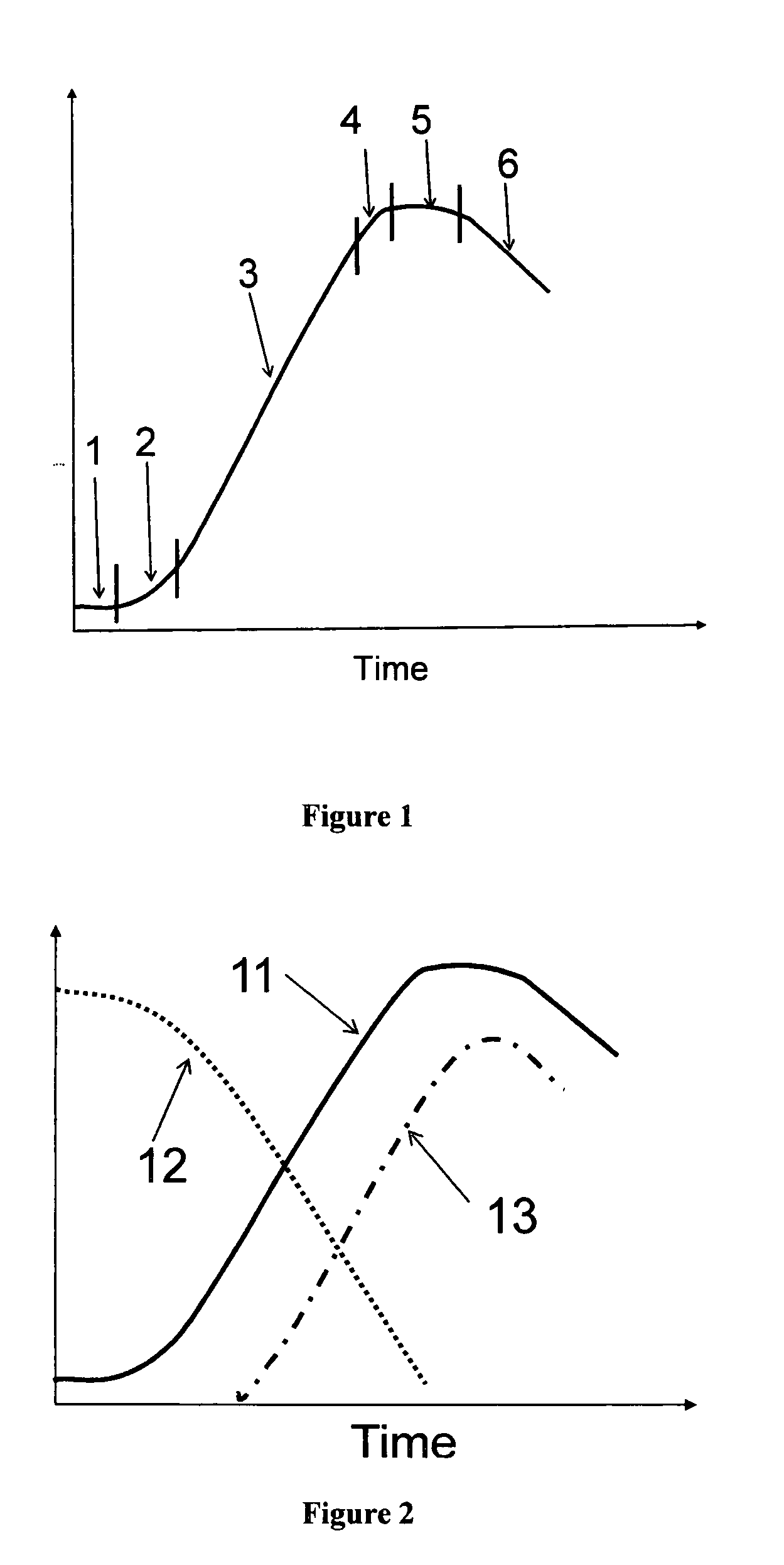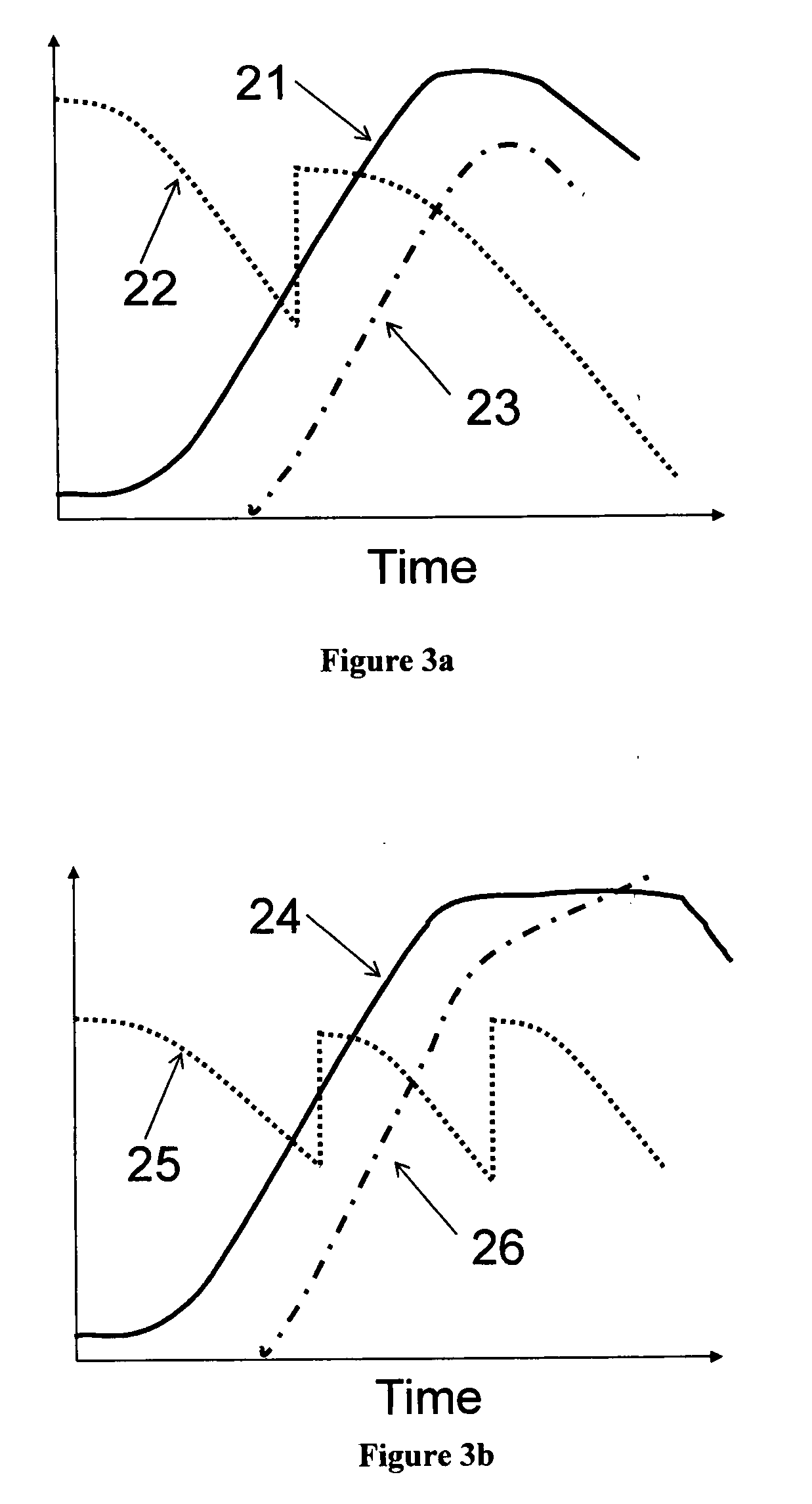Bio-process model predictions from optical loss measurements
- Summary
- Abstract
- Description
- Claims
- Application Information
AI Technical Summary
Problems solved by technology
Method used
Image
Examples
Embodiment Construction
[0065]Monitoring cell growth traditionally has been done with scatter or turbidity type instruments that measure the optical density (OD) generally at visible or near-infrared wavelengths. The cells can be of any variety including but not limited to bacterial, yeast, insect, or mammalian. The only requirement is that the cells scatter the light at the wavelength of the optical source used. Although this approach is generally an indicator of cell density, it has an inherent accuracy problem since it measures the total amount of light both absorbed and also scattered outside the aperture of the optical detector, by all of the living cells, dead cells, cell debris, and in some cases re-absorption by the growth media.
[0066]Typical turbidity sensors measure the reduction in transmission of the light (called “optical loss”) as it passes across an optical measurement gap. As the optical loss increases, the amount of the transmitted light decreases. The standard measurement unit of optical ...
PUM
 Login to View More
Login to View More Abstract
Description
Claims
Application Information
 Login to View More
Login to View More - R&D
- Intellectual Property
- Life Sciences
- Materials
- Tech Scout
- Unparalleled Data Quality
- Higher Quality Content
- 60% Fewer Hallucinations
Browse by: Latest US Patents, China's latest patents, Technical Efficacy Thesaurus, Application Domain, Technology Topic, Popular Technical Reports.
© 2025 PatSnap. All rights reserved.Legal|Privacy policy|Modern Slavery Act Transparency Statement|Sitemap|About US| Contact US: help@patsnap.com



